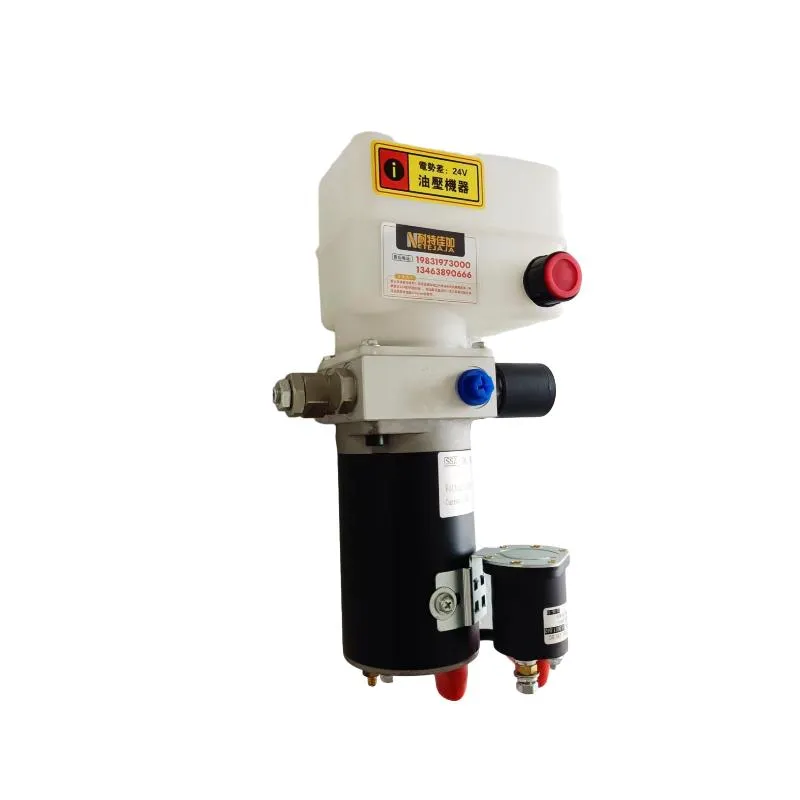Aug . 17, 2024 12:28 Back to list
Hydraulic Tie Rod Cylinder Manufacturing Process and Quality Standards Explained
The Importance of Hydraulic Tie Rod Cylinder Manufacturing
In the realm of industrial machinery, hydraulic systems play a pivotal role in enhancing the efficiency and effectiveness of various operations. Among the key components of hydraulic systems, hydraulic tie rod cylinders are paramount. These cylinders are responsible for converting fluid power into linear motion, making them essential for numerous applications in industries ranging from construction to manufacturing. The significance of hydraulic tie rod cylinder factories cannot be overstated, as they supply the critical components that enable heavy machinery to function optimally.
Understanding Hydraulic Tie Rod Cylinders
Hydraulic tie rod cylinders are designed with a series of tie rods that connect the cylinder’s end caps to the barrel. This design provides stability and strength while allowing for higher pressure, making them suitable for various demanding applications. They are known for their robust construction and ability to withstand the rigors of heavy-duty use. Typically, they are utilized in applications such as excavators, cranes, and hydraulic presses, where lifting and moving heavy loads are routine.
The Manufacturing Process
The manufacturing of hydraulic tie rod cylinders involves several stages, ensuring that each component meets rigorous quality and performance standards. The process starts with the selection of high-quality materials, usually high-strength steel, which is essential for durability and reliability. Once the materials are chosen, they undergo machining to shape and size them accurately. This stage is critical, as precision is necessary for the cylinders to operate efficiently and safely.
Following machining, the components are subjected to various treatments to enhance their performance. This includes processes like heat treatment to increase toughness and surface treatments to decrease friction and prevent corrosion. Afterward, the assembly of the cylinder takes place. Skilled workers meticulously assemble the different parts, including the barrel, piston, and end caps, ensuring that all components fit together perfectly.
hydraulic tie rod cylinder factory

Quality control is paramount in the manufacturing process. Each hydraulic tie rod cylinder must undergo thorough testing to ensure it can withstand the pressures and stresses it will encounter in real-world applications. Various tests, such as pressure tests and fatigue tests, are critical to ensuring the cylinders’ reliability and safety.
The Role of Technology
Modern hydraulic tie rod cylinder factories increasingly leverage advanced technology to optimize production. Automation plays a significant role in enhancing efficiency and consistency. CNC (Computer Numerical Control) machines allow for precise machining, reducing errors and enhancing productivity. Additionally, the integration of robotics in assembly lines speeds up the production process while maintaining high safety standards.
Moreover, simulation software is commonly used to predict how a cylinder will perform under different conditions. This predictive analysis is invaluable for making design improvements before the manufacturing process even begins. It helps manufacturers create products that meet or exceed industry standards while also addressing the specific needs of clients.
Conclusion
Hydraulic tie rod cylinder factories are indispensable in supplying the components that drive various industries forward. Their importance cannot be overstated, as they enable the functioning of many essential machines that are crucial for modern life. As technology continues to advance, these factories are poised to become even more efficient, producing hydraulic tie rod cylinders that not only meet but exceed the expectations of their users. The continued innovation and commitment to quality in the manufacturing of hydraulic tie rod cylinders will ensure their relevance and necessity in the evolving industrial landscape.
-
Fork Lift Power Units - Hebei Shenghan | Efficiency, Reliability
NewsJul.13,2025
-
1.5-Ton Turbocharged Cylinder-Hebei Shenghan|Hydraulic Solution,Energy Efficiency
NewsJul.13,2025
-
Auto Hoist Power Units-Hebei Shenghan|Efficiency&Industrial Lifting
NewsJul.13,2025
-
Double Acting Power Units-Hebei Shenghan|Hydraulic Solutions,Industrial Efficiency
NewsJul.13,2025
-
1.5 Ton Lifting Cylinder 70/82-40-290-535 - High-Performance Hydraulic Solution | Hebei Shenghan
NewsJul.13,2025
-
Fork Lift Power Units - Hebei Shenghan | Efficiency&Reliability
NewsJul.13,2025
